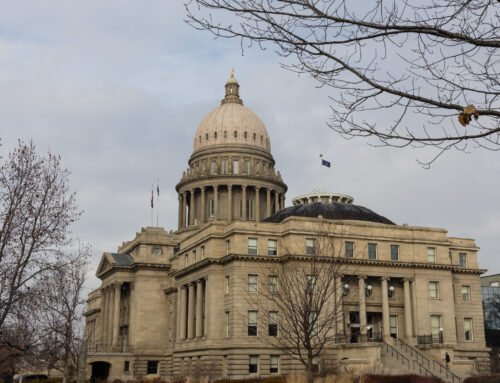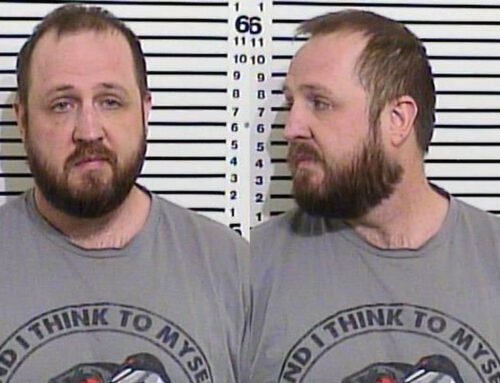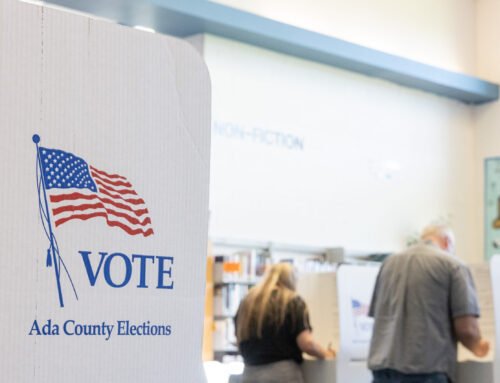The state of Idaho ended the 2023 fiscal year June 30 with a $99.1 million budget surplus, money which will be swept into the property tax reduction package the Idaho Legislature passed earlier this year.
Gov. Brad Little; House Speaker Mike Moyle, R-Star; Rep. Jason Monks, R-Meridian; and Sen. Doug Ricks, R-Rexburg, announced the surplus during a press conference at a family friend’s home Wednesday in Nampa.
“Common kitchen table economics,” Little said during the press conference. “We don’t spend what we don’t have. We rein in government spending and the impacts of our investments are starting to show up. Our rainy day funds are very robust.”
GET THE MORNING HEADLINES DELIVERED TO YOUR INBOX
The $99.1 million surplus will be combined with $205 million in funding already earmarked for property tax reductions through House Bill 292 to total about $300 million in property tax reductions, Little said.
Idaho homeowners will see their property tax credit when they receive their property tax bill this November, Little said.
The amount of property tax reductions Idahoans will receive will vary based on the county and taxing districts their home is located in and the home’s assessed valuation.
Idaho runs on a fiscal year calendar that runs from July 1 to June 30, meaning the 2023 fiscal year just ended and the 2024 fiscal year just started.
Why does Idaho have a budget surplus?
Idaho legislators planned to end the 2023 fiscal year with a balance of about $416 million. That money came through and is being carried forward into the new fiscal year 2024 budget.
The $99.1 million surplus is money that came in above that forecasted ending balance.
Idaho has a surplus because state revenues came in $80.1 million ahead of projections for the year and because state agencies spent $19 million less than budgeted, said Alex Adams, administrator of the Idaho Division of Financial Management.
During the 2023 session, the Idaho Legislature passed House Bill 292, the property tax reduction bill that called for transferring state budget surpluses into property tax reductions.
The new $99.1 million surplus will be broken down in three ways, Adams said.
- $50 million will go directly to the homeowner’s property tax relief fund.
- $24.5 million will go to school districts facilities, which are paid for with property tax dollars.
- $24.5 million will be distributed to counties based on the proportion of property tax each county levies to offset property taxes.
During the press conference Moyle said the amount Idahoans pay for property taxes will be shaped by local budgets, which are being set during city, county, school district and taxing district budget hearings this summer.
The value of the home also affects each homeowner’s property tax bill.
“The state of Idaho collects no property taxes, and the state of Idaho spends no property taxes. That’s all done at the local level,” Moyle said.
Didn’t Idaho’s governor veto the property tax bill?
In March, Little vetoed the property tax bill, but the Idaho Legislature had the votes to override the veto and pass the bill into law anyway. When he vetoed House Bill 292, Little said he had concerns that the bill jeopardized funding for transportation projects and hurt school districts by removing the March election date they use for bond and levy elections.
Need to get in touch?
Have a news tip?
In response, the Idaho Legislature advanced a “trailer bill” to address the Little’s concerns over transportation funding bonds, but it did not change plans to eliminate the school election date.
Little said the trailer bill improved the property tax bill, and he put out a statement March 29 championing the property tax bill as “property tax relief done right.”
Overall, House Bill 292 does several things, including:
- Sets up the homeowner’s property tax relief account to create a credit that reduces the property tax bill for owner-occupied homes that receive the homestead property tax exemption. Rental properties, second homes and vacation homes do not qualify.
- Sends a portion of state funding to school districts to pay down their bonds and levies. That portion of the money will be divided up based on a school district’s average daily attendance. If the district has paid off its bonds and levies, the district can save the money for future school construction needs.
- Eliminates the March election date that school districts used for bond and levy elections.
- Increases the income limit for participating in the circuit breaker program from $31,900 to $37,000 per household. It also increases the cap on a home’s valuation from $300,000 or 15% of the county median to $400,000 or 20% of the county median.
The 2023 property tax package was the third major tax cut legislators and Little approved in the past couple years.
During the 2022 session, the Idaho Legislature passed a $600 million income tax cut.
During the 2022 special session, the Idaho Legislature passed a $1 billion package that included a tax rebate, an income tax rate reduction and education funding increases.
“We are always going to try to reduce the tax burden for Idahoans every year, regardless of what the numbers look like,” Monks said at Tuesday’s press conference.
Before this year’s surplus, the state of Idaho posted back-to-back years of record budget surpluses. At the end of the 2021 fiscal year, the state posted an $890 million budget surplus. At the end of the 2022 fiscal year, Idaho posted a $1.4 billion surplus.






Leave A Comment